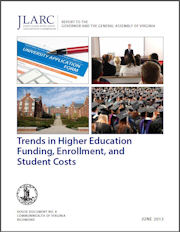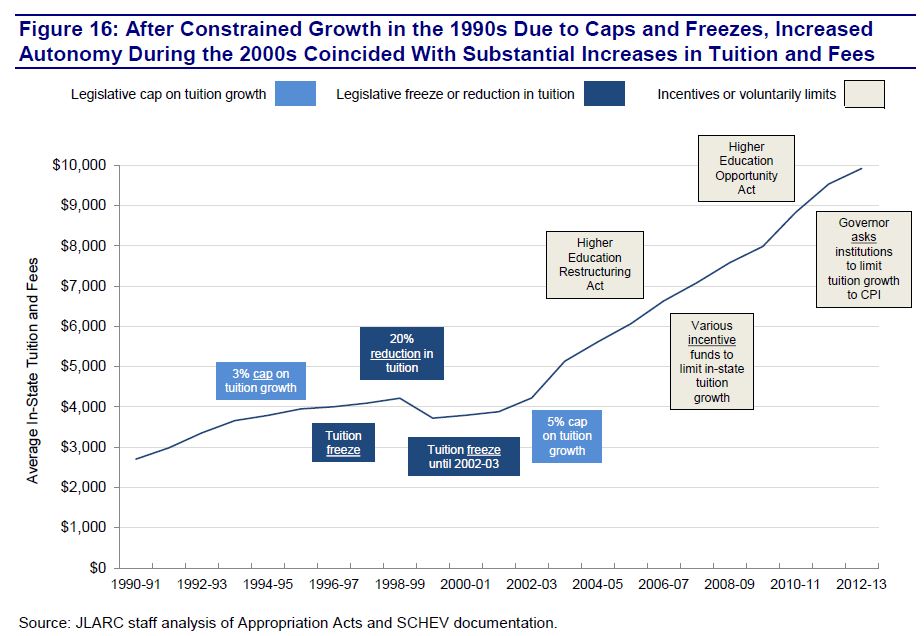Key findings from the new Joint Legislative Audit and Review Commission report, “Key Trends in Higher Education Funding, Enrollment, and Student Costs“:
- Most spending at public four-year higher education institutions in Virginia is on activities other than direct instruction. Auxiliary enterprises such as housing, dining and inter-collegiate athletics have been the largest driver of spending increases.
- The price of tuition, fees, housing and dining have increased over the past two decades on average by 150% between 1992-93 and 2011-2013.
- State funding as a percentage of total revenue in Virginia institutions has declined by 22% between 1991-92 and 2011-12.
- Charges to students far outpaced average increases in annual income, causing a surge in the percentage of students who borrow and the amount they borrow. The average annual student loan amount in Virginia almost tripled between 1992-93 and 2011-12 to nearly $100,000.
One area where Virginia four-year institutions appear to do an outstanding job: 46% of Virginia students graduate within four years compared to about 24% nationally. Boom! They’re in, they’re out. No dilly-dallying. Even adjusting for the socio-demographic profiles of the student bodies (students from more affluent families tend to graduate more quickly), Virginia institutions outperformed national averages by wide margins.
Bacon’s bottom line: This report sheds light on contentious issues revolving around higher education in Virginia, particularly rising student indebtedness. But it also strikes me as a missed opportunity. What conclusions arise from this document that will drive public policy? Nothing obvious.
Important questions go unanswered. Perhaps the most critical is this: To what extent is the cut in state support for higher education responsible for the higher tuition, fees and other charges? Clearly, declining state support is a factor. But is it the predominant factor? Do state cutbacks account for 20%, 50% or 80% of the rise in expenses? The report doesn’t say.
A related question, almost as vital, is this: To what extent can the run-up in educational spending be attributed to increasing administrative costs? The report side-steps that issue entirely.
Those questions matter because the central issue in this debate over public education in Virginia is this: Can citizens reasonably expect universities to cut more without sacrificing academic quality? If cutbacks in state support explain the entire increase in college-related expenses, then university presidents get a pass. If cutbacks in state support explain only a modest percentage of the increase, then presidents and boards need to stop blaming the state and look inward to their own bloated cost structures.




